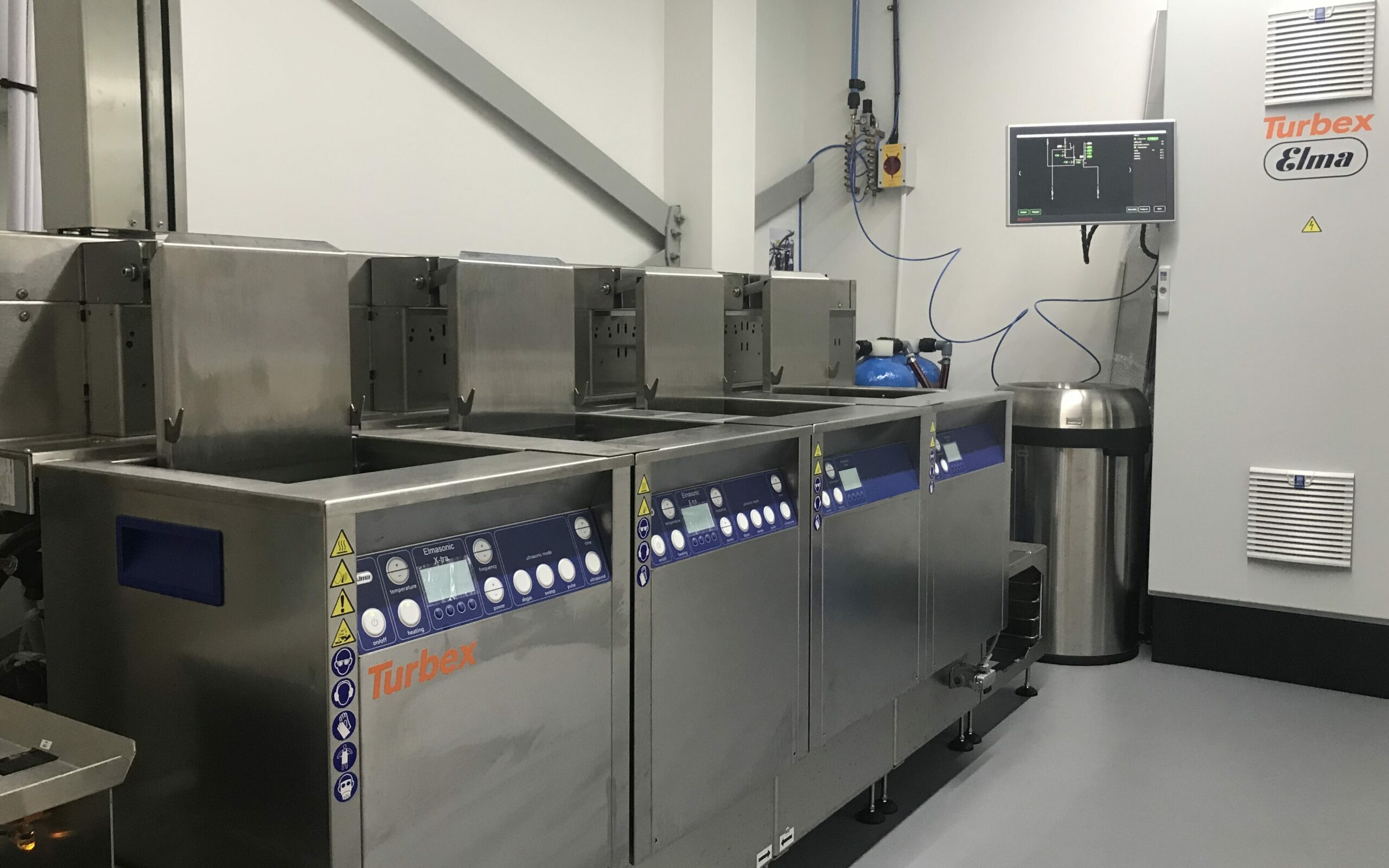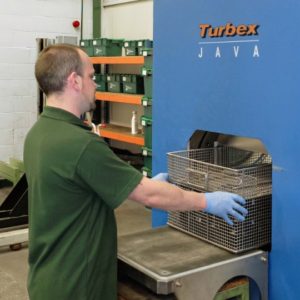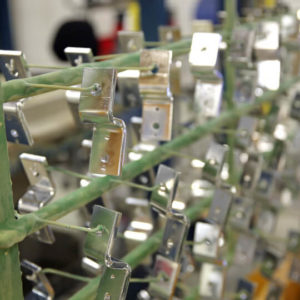Key takeaways:
- The Pro-Line has saved, on average, 2.5 hours a day on cleaning per employee in the polishing department.
- Workshop efficiency has increased across the board.
- Staff are happier and exposed less to harsh chemicals.
- The Watch Atelier are prepared for future expansions.

Who are The Watch Atelier?
Specialising in state-of-the-art timepiece servicing in the UK, The Watch Atelier, started life as Xupes Services.
Under the direction of Managing Director Megan Young, they rebranded and became independent in 2022 as The Watch Atelier, launching a new, large and technologically advanced servicing centre in the process.
Their skilled team carry out all facets of watch maintenance, from servicing, polishing and battery replacement, to restorations, valuations and part repairs.
What challenges did The Watch Atelier face?
The Watch Atelier grew significantly in the run-up to its rebranding, building a new workshop to keep up with increased servicing demands.
For smaller workshops or one-man-band style servicing firms, the time spent cleaning watches and watch componentry is generally low. For smaller companies like these, investing in dedicated, automated cleaning solutions is both challenging and ill-advised, as cleaning time is minimal.
However, for larger workshops, or those expanding rapidly, cleaning time increases sharply, so investing in high-end, dedicated cleaning solutions makes sense. As Megan Young explained, “a large machine like the Pro-Line is part of a business plan to aid with expansion.”
The key challenge for The Watch Atelier was the time each watch repair specialist spent cleaning.
Whilst scaling up, Megan explained that the company examined the time spent between manual vs automated machine cleaning. When cleaning manually, watchmakers spend around 20 minutes moving watches from basket to basket in what can be quite an involved and uncomfortable process:
- First, a pre-clean takes place using heat, vibration and cleaning chemicals. After polishing, residue remains in the cracks and the tubes of the watch, so removing this can be challenging.
- A series of baths remove most dirt and contamination, with each subsequent bath increasing cleanliness.
- Following the baths, steam cleaning helps reach the areas the manual baths were unable to reach.
- Finally, a cleaning bath with distilled water closes the process to remove watermarks. A heating plate dries the watch.
With cleaning increasing per watchmaker, Megan had to make a decision between hiring dedicated cleaning staff, or investing in an automated solution to lessen cleaning time across the board.
Eventually, The Watch Atelier settled on a machine investment avoiding the cost and motivation issues when employing a person to clean all day, every day.
Choosing the Elma Pro-Line
With limited space in the cleaning room of the workshop and futureproofing in mind, The Watch Atelier needed to make an important choice for their cleaning setup.
If they didn’t purchase the Pro-Line, The Watch Atelier would have had to invest in new setup of manual tanks integrated into kitchen units. This would cost thousands of pounds and didn’t necessarily fit into their plans to grow and develop.
Megan explained that “we decided to go all-in, avoid the temporary solution and instead choose an automated solution that will last for years. The entire new workshop was designed with futureproofing in mind and room to grow. The Elma was a part of this.”
What machine did Turbex install?
Cleaning in watch repair workshops is fairly niche, and few companies offer suitable automated ultrasonic machines.
Pioneering German ultrasonics firm Elma has the best reputation for supplying these kinds of machines to watchmakers. The Watch Atelier decided on the powerful Automated Pro-Line; they examined the pros and cons, studied the reviews and read testimonials. Everybody in the industry recommended this machine; plus, the choice made sense as part of the team’s mission to slash cleaning time.
The cost of the machine, maintenance, depreciation and downtime were compared to the costs of employing a full-time cleaning operator.
Machine details
Contact with Turbex began in January 2022. The Watch Atelier knew they wanted a Pro-Line, but weren’t sure about the configuration.
Turbex advised on what choices needed to be made regarding peripherals, options and the limited space available to The Watch Atelier.
Ultrasonic Cleaning, Rinsing, Deionised Water Rinsing and Drying
Intended use:
- Watch parts
- Removal of oils and grease
- 200 sets per week
Capacity:
- 15kg Maximum load
- 2-3 loads per hour
The cleaning process
1
Heated ultrasonic wash stage
2
Heated rise stage
3
Heated deionised water rinse stage
4
Hot air-drying stage
Key features:
- Basket agitation for improved performance on all stages
- Automatic water refill with high-level alarm
- Closed-loop deionised water system on stage 3
- Timer-controlled automatic rinse water purge to drain stage 2
- Drain valve extension handles with integrated waste connection
- Load/unload stations at both ends of the machine, safety drip tray
- 4x Stainless steel baskets
- Commissioning, operator training, maintenance training
Chosen options:
- Fine filtration on stage 1
- Ultrasonic action per rinse stage
The results
- Wholesale time savings
- Repairs are faster and more efficient
- Increased staff motivation and happiness
- Exposure to harsh chemicals reduced
- Improved workshop health & safety
The Elma Pro-Line installed by Turbex handles multiple baskets simultaneously, taking each set of watches through multiple baths, cleaning in stages and drying in one automated process.
Watchmakers need only load and unload the machine at each end and start the programmable cycles, freeing significant time per repair.
In fact, Megan estimates that the Pro-Line has saved, on average, 2.5 hours a day in the polishing department.
This is a significant time-saving and motivational force. Within this time, watchmakers can perform another entire polishing job, taking their average rate of 4-5 polishing jobs a day per watchmaker to 6-7 jobs.
Cleaning is an unfortunate, but necessary, element of a watchmaker or polisher’s role that doesn’t require huge amounts of skill. The Pro-Line helps production because it lessens the cleaning part of the role. Instead, Megan’s staff can “focus on skilled parts of the job”.
The result isn’t just increased efficiency – staff are happier too. They’re able to work on the parts of the job they love, and stay away from cleaning chemicals and unpleasant smells, improving quality of life and workshop health & safety.
Need to slash your cleaning times? Speak to Turbex
Our experts, backed by Europe’s best cleaning technologies, are here to help you implement smarter, future-proofing cleaning solutions.









